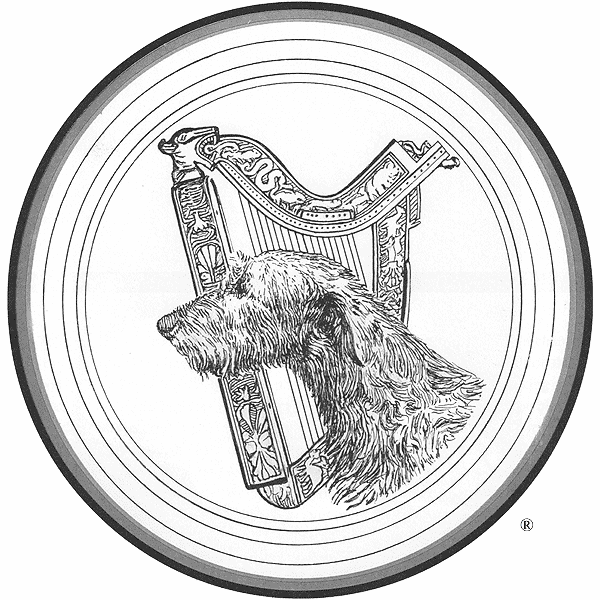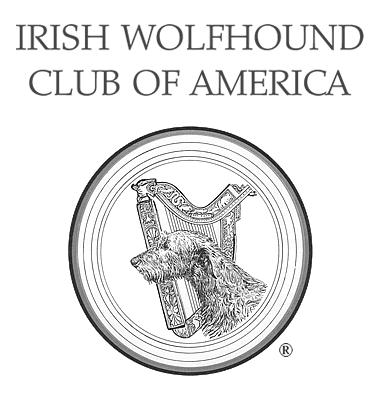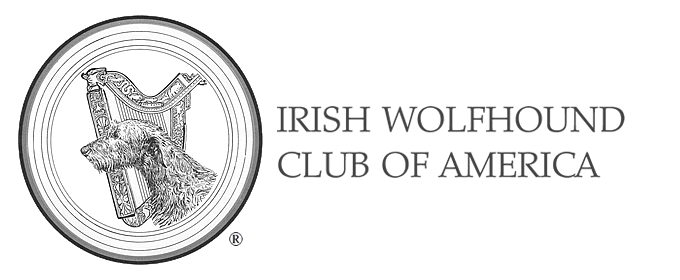Gastric Dilatation: Bloat
Most owners who have had sighthounds for a while are familiar with bloat. For those owners who are not, and for those who have not had this horrendous experience, I am going to give a brief explanation.
Bloat is an accumulation of gas and fluid in the stomach to the point the stomach is grossly distended and extremely painful. No single cause has been definitively implicated in bloat. Theories include dietary imbalances or maldigestions, bacterial infections and neurologic abnormalities. Dogs with deep chests (all sighthounds) seem to bloat more often, however it does occur in other breeds. Most researchers agree that individual dogs who gulp air (aerophagia), eat very quickly, or seldom belch are at higher risk of bloat.
Whatever the initiating cause, air accumulates in the stomach, distending it. The enlarged stomach presses forward on the diaphragm causing the dog to breath in short rapid breaths. As the distention continues, the pressure obstructs local, then regional blood vessels, impeding circulation. The dog’s gums become pale, then gray to bluish, indicating shock. The stagnant blood absorbs toxins from the deteriorating stomach and, in a worsening cascade of events, the dog goes into endotoxemic shock (similar to toxic shock syndrome). Once a dog reaches this point he is unlikely to survive.
A complicating factor is volvulus (torsion), or twisting of the stomach. The spleen is connected by blood vessels to the greater curvature of the stomach. As the distention of the stomach increases and impedes blood flow to and from the spleen, the spleen becomes engorged and heavy. It is thought this abnormally heavy spleen pulls the stomach down and around until it is twisted upon itself ninety to one hundred and eighty degrees. Volvulus dramatically shortens the sequence of events from normal to dead dog.
Early signs of bloat (with or without volvulus) are restlessness, panting, inability to lie down comfortably and gulping. As it progresses the distension of the abdomen behind the ribs becomes more noticeable. The dog may whine or whimper and look back at his flank, like a horse with colic. He will have nonproductive wretching which can be described as sounding like: “ga-a-ack.” If you touch the abdomen, it is hard and if you thump on it with a finger it sounds like a drum. The gums are pale (occasionally initially they are deep red with congested blood). Without immediate veterinary care the dog will become weak, lethargic and eventually nonresponsive. Breathing becomes more labored. The gums turn bluish gray and he becomes comatose. Death follows quickly.
What do you do? Most importantly become aware and learn the early signs. Feed your dog two small meals rather than one large meal. Learn the bloat points, and use them on the way to the veterinary clinic. Call your veterinarian and get there IMMEDIATELY. It is better to be wrong with a live dog than ignore signs and have a dead dog. Dogs with bloat need immediate and intensive treatment if they are to have a chance to survive. I hope you never have a dog bloat, for it is a terrible experience. Remember: an alert aware owner and immediate care does make the difference between life and death.
© 2014 C. A. Krowzack, DVM
This page was last updated 01/04/2021.



